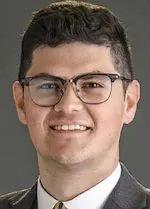Commentary
Article
Urology Times Journal
Malpractice Consult: What to know about direct examination of lay witnesses
Author(s):
"To form a connection between the witness and the jury and establish the witness’ credibility, the witness needs to be the star," writes Austin M. Richards, Esq.
Austin M. Richards, Esq

This column, part of our continuing series on the anatomy of a medical negligence trial, will focus on the direct examination of lay witnesses. Direct examination is when the side presenting its case calls a witness to the stand to testify in the form of answering the attorney’s open-ended questions. The goal of a direct examination of a lay witness is to provide the jury with evidence that advances the party’s theory of the case and undermines the opposing party’s narrative. There are limitations on the types of information a lay witness can provide. In general, lay witnesses are limited to providing testimony based on the witness’ firsthand perception. Lay witnesses are not permitted to offer testimony concerning technical or scientific principles. In simplest terms, a lay witness can tell the jury what they saw, heard, smelled, etc, and cannot offer an opinion about how or why something happened.
As you may expect, the classic example of a lay witness is someone who has firsthand knowledge of an event that is relevant to a case from having personally seen what happened, ie, an eyewitness. In a medical negligence trial, the plaintiff or the plaintiff’s family usually serve as lay witnesses to describe the nature of the plaintiff’s claimed injury. In some instances, lay witnesses are used to establish the authenticity of documents.
Lay witnesses are an important part of the process of admitting physical evidence, like written documents, into the evidentiary record that the jury will evaluate when deciding the outcome. In general, before a document becomes evidence, a witness must establish the document is authentic. To do this, a witness is asked a series of foundational questions that establish what the document is, that the witness is familiar with the document, how the witness knows what the document is, and that the document is in the same condition as the last time the witness saw it. For example, in a case involving a car crash, an attorney may want to use the crash report as evidence. To do this, the attorney would call the officer who prepared the report as a witness and ask the questions necessary to establish that the report is an authentic copy of the report the office prepared when investigating the crash. When it’s clear that the officer is familiar with the document and that the copy to be given to the jury is what it purports to be, the attorney can ask the officer questions about the contents of the report.
In addition to the technical requirements, an effective direct examination sounds like two people having a conversation about the facts of the case. The lawyer, standing in the shoes of the jury, should be asking the logical follow-up to the witness’ statements. But this can be difficult for lawyers for a number of reasons.
First, the courtroom setting doesn’t lend itself to organic conversation and witnesses often get nervous under the pressure. Second, you have likely heard that a lawyer should never ask a question they do not know the answer to. And that is true. That means every time a lawyer asks a witness something that seems inquisitive in nature, the lawyer is faking it. That can come across as disingenuous to the jury. Additionally, the lawyer is using the witness to further a position in the case, so when the witness gets nervous and goes “off script,” the lawyer must redirect the conversation to the relevant facts. This, too, can break the illusion of a “conversation” and take the jurors out of the story being told.
Finally, lawyers need to put their ego in check and allow the witness to be the star of the show. To form a connection between the witness and the jury and establish the witness’ credibility, the witness needs to be the star. If done correctly, when the jurors are deliberating, they won’t be thinking about something the lawyer said, but about a powerful piece of testimony from the witness.
Join us next time as we discuss cross-examination of lay witnesses.






























